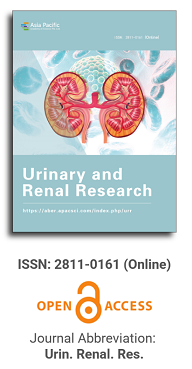
Asia Pacific Academy of Science Pte. Ltd. (APACSCI) specializes in international journal publishing. APACSCI adopts the open access publishing model and provides an important communication bridge for academic groups whose interest fields include engineering, technology, medicine, computer, mathematics, agriculture and forestry, and environment.
Efficacy and safety of minimally invasive percutaneous nephrolithotomy(MPCNL) and standard channel percutaneous nephrolithotomy(SPCNL) in the treatment of kidney stones:A meta analysis
Vol 4, Issue 1, 2023
Download PDF
Abstract
Objective: To evaluate the efficacy and safety of minimally invasive percutaneous nephrolithotomy(MPCNL) standard channel percutaneous nephrolithotomy(SPCNL) in the treatment of kidney stones. Methods: We searched pubmed, Cochrane Liabrary, CNKI, VIP , Wangfang database from January 1, 1992 to April 1, 2015. Screening of the two methods of treatment of kidney stones randomized controlled trials (RCT) and quality assessment, using revman5.2 software for statistical analysis. Results: A total of nine RCT, 1017 patients, 508 cases in MPCNL group, 509 cases in SPCNL group. The results show: the stones clearance , MPCNL group was lower than SPCNL group [OR=0.62, 95%CI(0.43, 0.91), P=0.01]; in terms of operative time, MPCNL group was longer than SPCNL group [MD = 14.23 , 95% CI (6.30, 22.16), P = 0.0004]; hospitalization time, blood loss, total complications, were no significant difference between the two group, the results are [MD = 0.88, 95% CI (-0.69 , 2.44), P = 0.27], [MD =-19.87, 95% CI (-64.36, 24.61), P = 0.38], [OR=1.28, 95%CI(0.90, 1.84), P=0.17]. Conclusion: the stone clearance rate:MPCNL group was lower than SPCNL group, the operative time of MPCNL group was longer which may affect postoperative recovery, the complications, hospital stay, blood loss, the two groups had no significant difference. So , we tend to standard channel percutaneous nephrolithotomy in the treatment of common type of kidney stones.
Keywords
References
- Luo Jianshi, Chen Guang Research progress of percutaneous nephrolithotripsy in the treatment of renal calculi [j] Medical review, 2013, 19 (24): 4538-4541
- Resorlu B, Kara C, Oguz U, et al. Percutaneous nephrolithotomy for complex caliceal and staghorn stones in patients with solitary kidney[J]. Urological research, 2011, 39(3): 171-176.
- Zhangsuibing, liuxiangbin Progress in minimally invasive treatment of kidney stones [j] Heilongjiang medical journal, 2009,33 (5): 349-351
- Jadad A R, Moore R A, Carroll D, et al. Assessing the quality of reports of randomized clinical trials: is blinding necessary? [J]. Controlled clinical trials, 1996, 17(1): 1-12.
- Jüni P, Altman D G, Egger M. Assessing the quality of controlled clinical trials[J]. Bmj, 2001, 323(7303): 42-46.
- HIgGins JPT, Green S(editors). Cochrane Handbook for systematicreviews of Interventions Version 5.1.0 [updated September 2011]. The Cochrane Collaboration, 2011, Available from.
- Heyufa Comparison of the therapeutic effects of micro channel percutaneous ureteroscopic holmium laser lithotripsy and standard channel percutaneous nephrolithotomy on renal calculi [j] Clinical medical engineering, 2015, 22 (1): 23-27
- Zhoujinbo Comparison of standard channel and microchannel percutaneous nephrolithotomy in the treatment of renal calculi [j] Grassroots medical forum, 2014, 18 (25): 3383-3384
- Hejingwei, tanjianqiu, fengnengzhuo, et al Comparison of standard and microchannel percutaneous nephroscopy in the treatment of renal calculi [j] China practical medicine, 2014, 9 (4): 66-67
- Ouxiaocong, liusonghua Comparative analysis of clinical efficacy of minimally invasive percutaneous nephrolithotomy and standard channel percutaneous nephrolithotomy in the treatment of renal calculi [j] Chinese medical guide, 2014, 12 (30): 176-177
Supporting Agencies
Copyright (c) 2023 Ke Zhang, Jianjun Cheng, Jingyu Wang, Ruimin Ren

This work is licensed under a Creative Commons Attribution-NonCommercial 4.0 International License.

This site is licensed under a Creative Commons Attribution 4.0 International License (CC BY 4.0).
.png)
Prof. Wei-Yen Hsu
National Chung Cheng University, Taiwan

